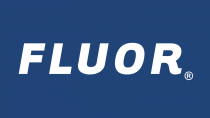Global $2.36 Billion Aircraft Sensors Market by Sensor Type and Region (2018-2023) - ResearchAndMarkets.com
The "Global Aircraft Sensors Market - Segmented by Sensor Type (Temperature, Pressure, Position, Flow, Torque, Radar, Accelerometers, Proximity) and Region - Growth, Trends, and Forecast (2018 - 2023)" report has been added to ResearchAndMarkets.com's offering.
Aircraft Sensors Market was worth USD 1.68 billion in 2017 and is projected to reach USD 2.36 billion by 2023, registering a CAGR of 5.86% over the period 2018-2023.
The safe and effective operations of an aircraft are carried out through various embedded sensors across the machinery. These sensors provide feedback on a wide array of conditions of an airplane, owing to which it is an integral part. For example, flow sensors are used to monitor and provide feedback for the amount of liquid coolant and lubricant oil, as well as fluid moving in the bleed air system and fuel transfer. This is likely to boost the market growth over the forecast period.
In July 2018, Gas Sensing Solutions (GSS) developed unique carbon dioxide sensing technology, which would drastically improve the air quality in the cabin of aircraft. Honeywell led the project, along with the partnership with SST Sensing, Gas Sensing Solutions, and National Physical Laboratory. This is expected to compel the competitors and government to invest in the similar technology, which is expected to have a positive impact on the market growth over the forecast period.
Adoption of Internet of Things (IoT) in Aircrafts
The Internet of things (IoT) is becoming prevalent in every industry, including aviation wherein it can be used in many aspects, such as baggage tracking, monitoring plane health conditions, and controlling significant elements.
The companies are rigorously investing in IoT technology for aircrafts to enrich the customer's experience. For instance, in June 2017, Honeywell inflight technology allows using Wi-Fi, which further activates flight's sensors to foresee any faults, which is expected to fuel the market growth over the forecast period.
Temperature Sensor to Have the Largest Share
Temperature sensors are an integral part of an aircraft, which is incorporated at various areas, such as cabin, brakes, air ducts, interstage turbines, and hydraulic lines. The manufacturers have to comply with the industry standards and regulations to commercialize.
With the increasing number of flight passengers, the number of commercial aircrafts is increasing rapidly across the world. This will propel the usage of temperature sensors in aircrafts, thereby, fueling the market growth over the forecast period. For instance, in July 2018, Airbus introduced whale-faced aircraft, BelugaXL. It is a next-generation aircraft having a humongous capacity, which requires a considerable amount of sensors, primarily temperature sensors.
North America to Dominate the Aircraft Sensors Market
In North America, the airline passengers are increasing, owing to the high influx of immigrants, working professionals, and major tourist attraction. This has led to the increase in the frequency of aircraft running, thereby, ascending the scheduled maintenance. The aforementioned factor is expected to increase the replacement rate of sensors in a plane in the region, which is, in turn, expected to propel the market growth over the forecast period.
Furthermore, the United States is making deals with other emerging economies or countries to sell high-end military aircrafts, which are likely to boost the market growth over the forecast period.
Topics Covered
1. Introduction
2. Research Approach and Methodology
3. Executive Summary
4. Aircraft Sensors Market Dynamics
4.1. Aircraft Sensors Market Overview
4.2. Industry Value Chain
4.3. Factors Driving the Market
4.3.1. Technological Advancements in MEMS
4.3.2. Rising Demand for Commercial and Business Aircrafts
4.3.3. Adoption of Internet of Things (IoT) in Aircrafts
4.4. Factors Restraining the Market
4.4.1. Stringent Regulations in Aviation Industry
4.4.2. Complexity in Manufacturing of Aircraft Sensors
4.5. Industry Attractiveness - Porter's Five Industry Forces Analysis
4.6. Technology
4.7. Patents
4.8. Use Cases
4.8.1. Commercial and Business Aircraft
4.8.2. Military Aircraft
5. Global Aircraft Sensor Market Segmentation
5.1. By Sensor Type
5.1.1. Temperature
5.1.2. Pressure
5.1.3. Position
5.1.4. Flow
5.1.5. Torque
5.1.6. Radar
5.1.7. Accelerometers
5.1.8. Proximity
5.1.9. Others
5.2. By Geography
5.2.1. North America Aircraft Sensors Market (2018-2023)
5.2.2. Europe Aircraft Sensors Market (2018-2023)
5.2.3. Asia-Pacific Aircraft Sensors Market (2018-2023)
5.2.4. Latin America Aircraft Sensors Market (2018-2023)
5.2.5. Middle East & Africa Aircraft Sensors Market (2018-2023)
6. Competitive Intelligence - Company Profiles
6.1. TE Connectivity Ltd.
6.2. Honeywell International Inc.
6.3. UTC Aerospace Systems
6.4. Meggitt PLC
6.5. AMETEK Inc.
6.6. Thales Group
6.7. General Electric Company
6.8. The Raytheon Company
6.9. Safran Electronics & Defense
6.10. Curtiss-Wright Corporation
6.11. Zodiac Aerospace
6.12. Hydra-Electric Company
6.13. PCB Piezotronics Inc.
6.14. Avidyne Corporation
6.15. Precision Sensors
7. Investment Analysis
8. Opportunities in Global Aircraft Sensor Market
For more information about this report visit https://www.researchandmarkets.com/research/rqcb9r/global_2_36?w=4
View source version on businesswire.com: https://www.businesswire.com/news/home/20190205005901/en/





